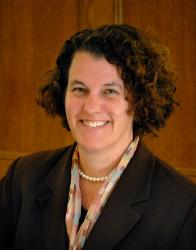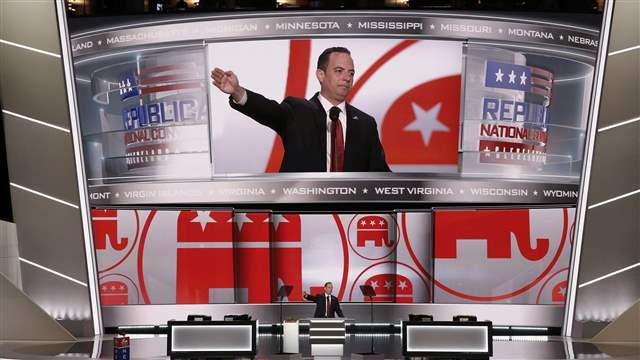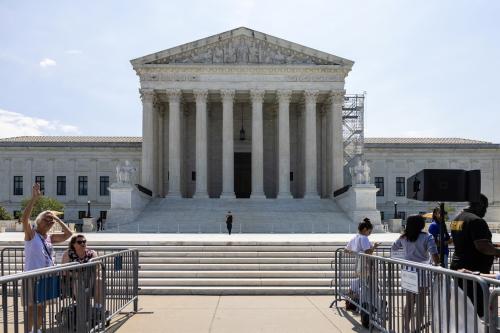The just-released Republican platform calls for the federal government to get out of the business of student loans:
The federal government should not be in the business of originating student loans. In order to bring down college costs and give students access to a multitude of financing options, private sector participation in student financing should be restored.[i]
This plank of the platform has its roots in the recent history of student loans. In 2010, federal legislation scaled back the role of private banks in the federal loan program. Banks now act only as contractors (“servicers”) for the Department of Education, collecting payments, keeping records, and communicating with borrowers.
Some would like to return to the old system, which they portray as a capitalist Garden of Eden, where banks freely competed for students’ business and offered a range of loans tailored to the tastes of borrowers. The old, competitive market, goes the story, helped to hold down tuition costs, which have since soared out of control as the federal grip on the loan market has tightened.
The only hitch to this story is that it has zero connection to reality. There has never been a large-scale, competitive, private market for student loans in the U.S. Further, economic theory predicts there will never be a large-scale, competitive, private market for student loans. Milton Friedman pointed this out in 1955. Some of his latter-day acolytes seemed to have missed that lecture.
The theory and reality of student loans tie together so tidily that economists frequently use them to explain economic fundamentals in introductory classes. In this article I explain why, in theory, the private market won’t provide student loans (a “market failure”) and how the history of student loans in the U.S. bears out this prediction.
Economists think of education as an investment, which (by definition) creates costs in the present and benefits in the future. A classic example is a retirement fund: savers skip consumption now so they can have an income when they retire. Another investment is health: we exercise now to build strength and (we hope) lengthen life. Education, too, is an investment: students pay tuition and forgo earnings in the present, in hopes of improved lives later, when they leave school. Health and education both comprise what economists call “human capital.”
To pay the costs of education in the present, students need cash. In a business deal, an entrepreneur puts up collateral to get a loan for a potentially profitable venture. But students can’t put themselves up for collateral. In part, this is because it is very difficult for private lenders to place a lien on (or even measure) a person’s earnings.
This is a market failure: there is a good investment to be made, but private lenders won’t make a loan at the right rate of interest. Note that there is a private market for unsecured loans (e.g., credit cards, payday loans) but the interest rates on these loans are far higher than those on secured loans (e.g., car loans, mortgages).
The interest rate on credit cards and payday loans is a reasonable lower bound on rates we would expect to see on private loans to students, if they existed. I stress students in that last sentence because there is a large, competitive, private market in a product misleadingly labeled “student loans.” These private “student loans” don’t meet the standard definition of a student loan, because they typically require a creditworthy borrower or cosigner. This rules out most students: it’s pretty unusual for a recent high school graduate to have a credit record that qualifies her as sole signatory on a private loan. These private “student loans” are unsecured consumer credit with a soothing name, and they potentially lead families to over-borrow. The same critique applies to federal Parent PLUS loans, which are made to the parents of college students. Because they are not made to students, they too do not meet the economic definition of student loans. A student loan is secured only by the future earnings of the student borrower. Student loans create special risks for the lender.
Another oddity of private “student loans” is that, unlike other private loans, they cannot be discharged in bankruptcy. This is astonishing. The rationale for student loans surviving bankruptcy is that they are secured solely by human capital, which (unlike a car or a home) can’t be separated from its owner. Extending this protection to loans that are secured by the assets of a creditworthy borrower or co-signer makes no economic sense. It’s a blatant giveaway to lenders, who (on the front end) are allowed to screen borrowers for creditworthiness and (on the back end) benefit from the special protections intended for student loans, which have no such screening.
Privately-backed income share agreements (ISAs) do meet the definition of a student loan, by contrast. In an ISA, a borrower agrees to pay back a fixed share of her income for a fixed number of years, in exchange for money to fund her education. Private ISAs have never developed beyond a niche product in the U.S., and I predict they never will.[ii] Why? It’s extremely difficult for private investors to track income. The federal government, through the tax system, has the unique ability to both measure and collect from the income of U.S. taxpayers. The federal government is therefore uniquely situated to make unsecured loans to students who lack a credit record at an interest rate that would be infeasible for the private market.
The history of student loans conforms to the predictions of the preceding economic theory. Government has always played a central role in student loans in the U.S.
The modern student loan program dates to 1965, when the Guaranteed Student Loan, now known as the Stafford Loan, was introduced. Private lenders provided the starting capital because then, as now, politicians were reluctant to increase the federal debt. Since banks put up the capital, it technically was not the government making these new student loans.
But the federal government was firmly in control of student loans and bore all their risk. The federal government set interest rates, chose who would get loans, and capped loan amounts. The government also guaranteed banks a return on the loans and paid interest while some borrowers were in school. If the borrower did not pay off her loan (that is, went into default), the government paid the bank instead.
The role of the banks was limited: they took applications, disbursed the loans, collected payments, and kept records on individual loans.
During this era, the banks were essentially middlemen who bore almost no risk. Both the principal, and a minimum interest, were guaranteed by the federal government. As economic theory predicts, banks liked this risk-free profit very much. This was not a free market, by any standard definition.
During the 1990s, the federal government began offering Stafford loans without a private intermediary, through the new Direct Loan program. In this new program, the federal government took applications and disbursed loans, instead of the banks. The role of the private lenders in the new program was limited to servicing the loans after borrowers went into repayment.
Direct Loans were, at the outset, an option to the existing loan program, which continued to make loans. Students didn’t shop between the two programs: rather, they borrowed from whichever program their college opted into. Unsurprisingly, the private banks that participated in the old program were opposed to the expansion of Direct Loans, which ate into their profits. An informal cap on the size of the Direct Loan program kept it at about a third of the loan market.
With the passage of the Health Care and Education Reconciliation Act in 2010, the federal Direct Loan Program became the sole source of federal student loans in the United States.
Private lenders no longer originate federal student loans. They only service the loans on the back end, collecting payments and interacting with borrowers on behalf of the Department of Education. They still own some loans from the old program, but these are gradually disappearing as borrowers pay off their debts.
Student loans are a rare case in which economic theory gets it exactly right. Economic theory predicts, and history shows, that government will always play a central role in providing student loans. The “free market” in student loans to which some hope to return is one in which government bore the risk while banks enjoyed a healthy, risk-free return. Not one of the economics texts on my bookshelf defines a competitive market in these terms.
There is a lot wrong with our student loan program: the repayment system is a mess, default rates are high, and vulnerable students are defrauded into borrowing by scam colleges. These are serious problems that call for serious solutions.
A rallying call to get government out of student loans is not serious policy. It’s as absurd as demands for government to keep its hands off Medicare.[iii]
[i] https://prod-static-ngop-pbl.s3.amazonaws.com/media/documents/DRAFT_12_FINAL%5b1%5d-ben_1468872234.pdf?mid=76330&rid=13491920, pg. 35.
[ii] The ISAs that were proposed by the Bush campaign were not private, but instead funded and administered by the federal government. When the federal government is the lender, an ISA is essentially a student loan with income-based repayment. They key distinction is that, in an ISA, a student may end up paying back more than she borrowed. That’s because in an ISA the lender acquires both the upside and the downside of earnings, suffering a loss if the borrower earns little and making a profit if the borrower earns a lot. With the standard income-based repayment plans, the lender takes on only the downside risk. See https://www.brookings.edu/blogs/social-mobility-memos/posts/2016/01/18-what-can-jeb-plan-do-higher-education-akers; https://www.brookings.edu/research/reports/2016/02/11-jeb-bush-student-loan-plan-chingos.
[iii] http://economix.blogs.nytimes.com/2011/02/11/keep-your-government-hands-off-my-government-programs/?_r=0
The Brookings Institution is committed to quality, independence, and impact.
We are supported by a diverse array of funders. In line with our values and policies, each Brookings publication represents the sole views of its author(s).




